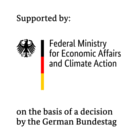IGF 20627 BG

| Period: | 01.02.2020 - 30.04.2023 |
|---|---|
| Partner: | Fraunhofer IKTS Dresden |
| Funder: | AiF |
| Project Manager: | M.Sc. Robert Sottor |
| Team: | Electrolytic Corrosion |
Description of the problem
Magnesium is a lightweight metal, due to its mechanical properties and low density it is of high interest in aviation, aerospace and automotive applications. However, due to the low standard potential and its unstable native oxide layer it is very susceptible to corrosion. Therefore it cannot be used for the most applications.
Approach
The approach is to create thick ceramic oxide layers on the surface using plasma electrolytic oxidation. These passive films are very inhomogeneous and susceptible for cracks with limited corrosion protection. Our approach in order to achieve better corrosion protection is the incorporation of nanocontainers, charged with corrosion inhibitors into the passive layer. The integration of the nanocontainers into the passive layer will be done in-situ during the anodization process. Once they incorporated the nanocontainers will slowly release the inhibitors for a higher protection of the magnesium components and their durability will increase.
Goal of the project
The goal is to create an effective method for the integration of the nanocontainers into the passivation layer, therefore the nanocontainers must be stabilized with additives to get a stable aqueous dispersion. The nanocontainers are working as ion exchangers, so they can release a corrosion inhibiting additive or they absorb corrosion accelerating ions. Possible corrosion inhibitors are either metallic cations as well as organic or inorganic anions. The produced layers will be examined by microscopy to evaluate the texture of the surface, as well as electrochemical examination to investigate the corrosion behaviour. In salt spray tests we directly compare and describe the corrosion damage of different samples of surfaces. Also the composition and the physical properties of the layer, e.g. hardness and wear will be examined.
back

Das IGF-Vorhaben Nr. IGF 20627 BG der Forschungsvereinigung DECHEMA e.V. wird über die AiF im Rahmen des Programms zur Förderung der industriellen Gemeinschaftsforschung (IGF) vom Bundesministerium für Wirtschaft und Klimaschutz aufgrund eines Beschlusses des Deutschen Bundestages gefördert.
M.Sc. Robert Sottor
Tel.: 069 / 75 64-671
E-Mail: Sottor
Final Report (pdf, 3.6 MB)
M. Schneider, K. Kremmer, W. Fürbeth, S. Lederer, R. Sottor
Surface & Coatings Technology 459 (2023)
R. Sottor, R. Gruen, K. Kremmer, S. Lederer, M. Schneider, W. Fuerbeth